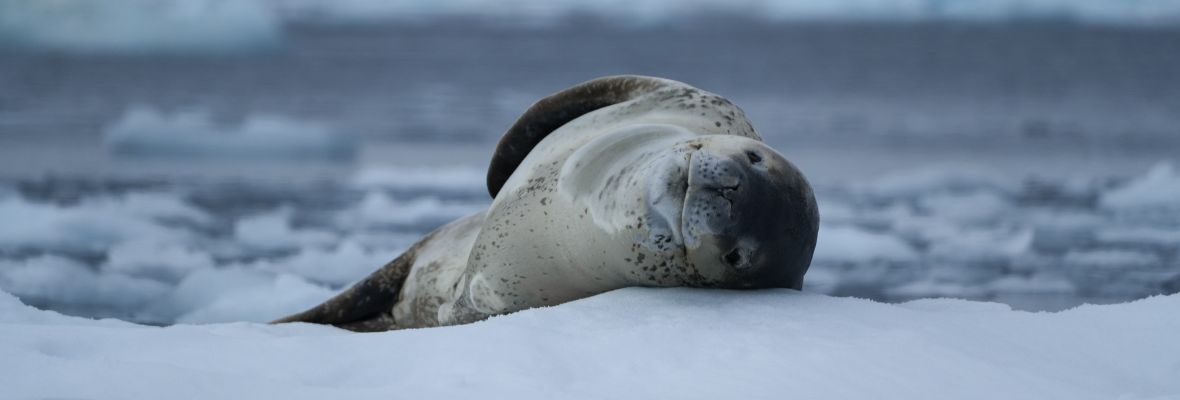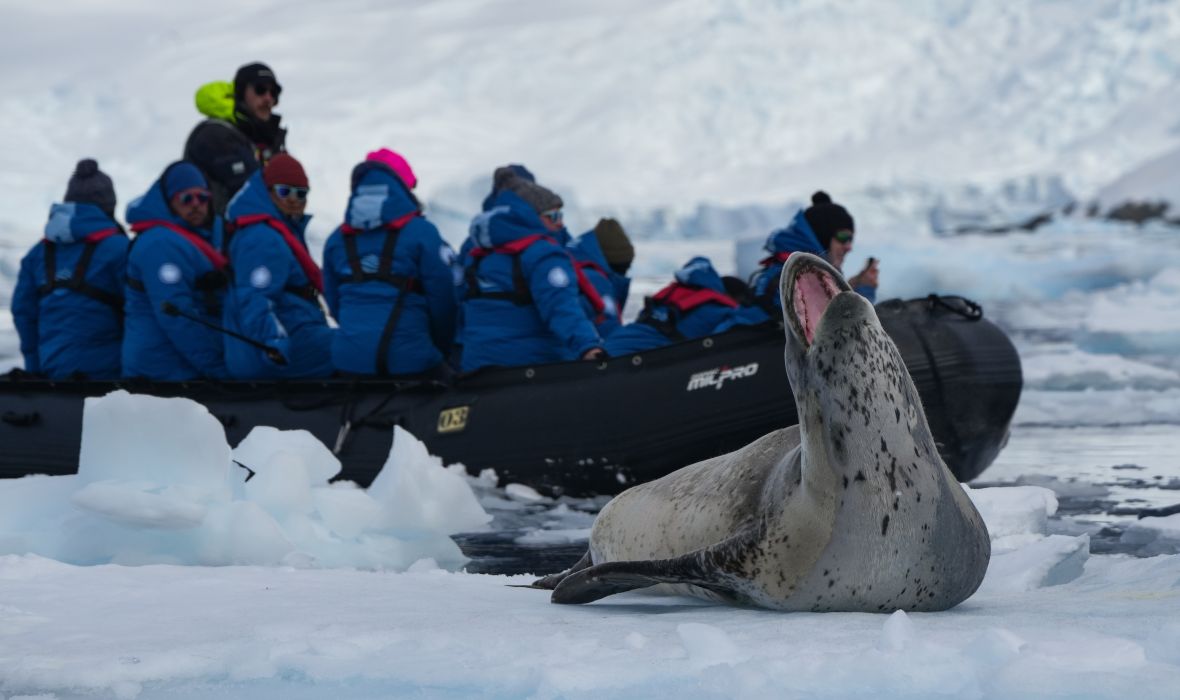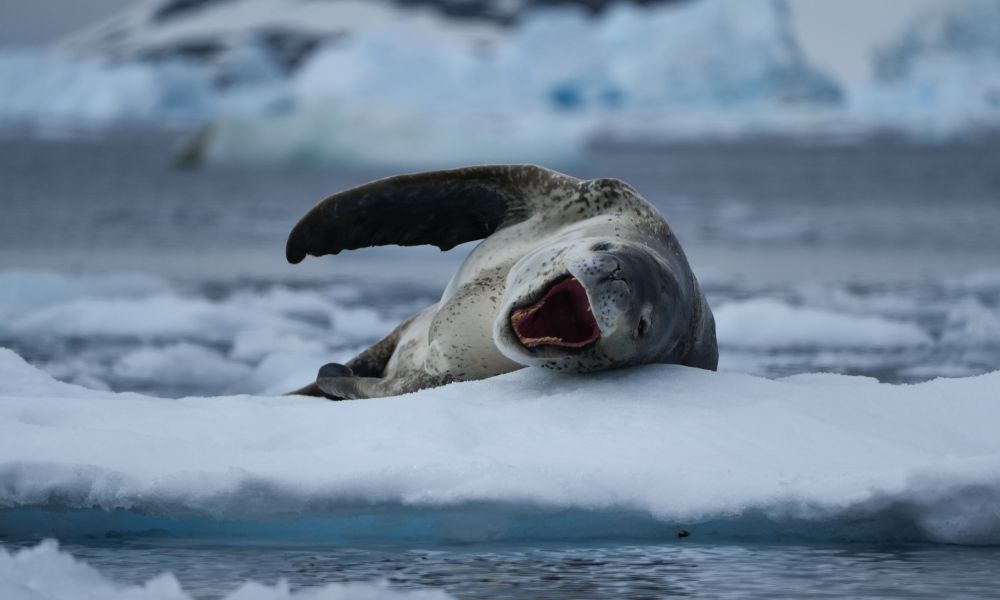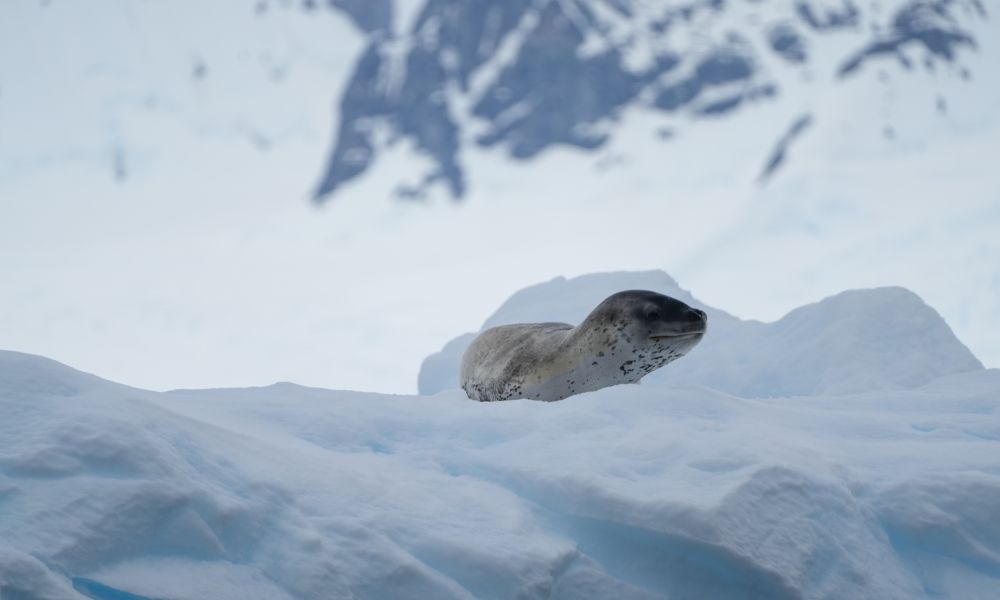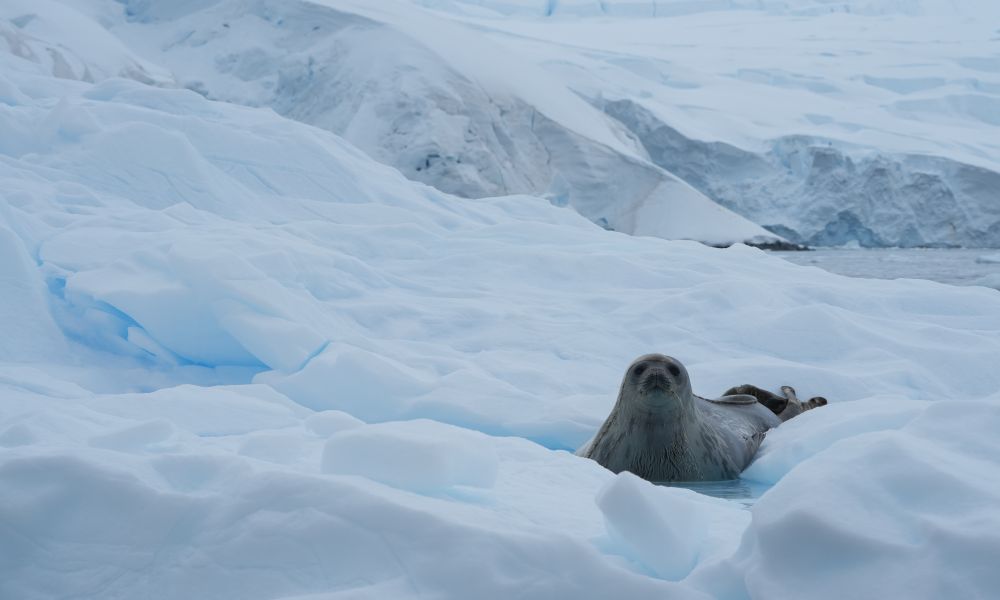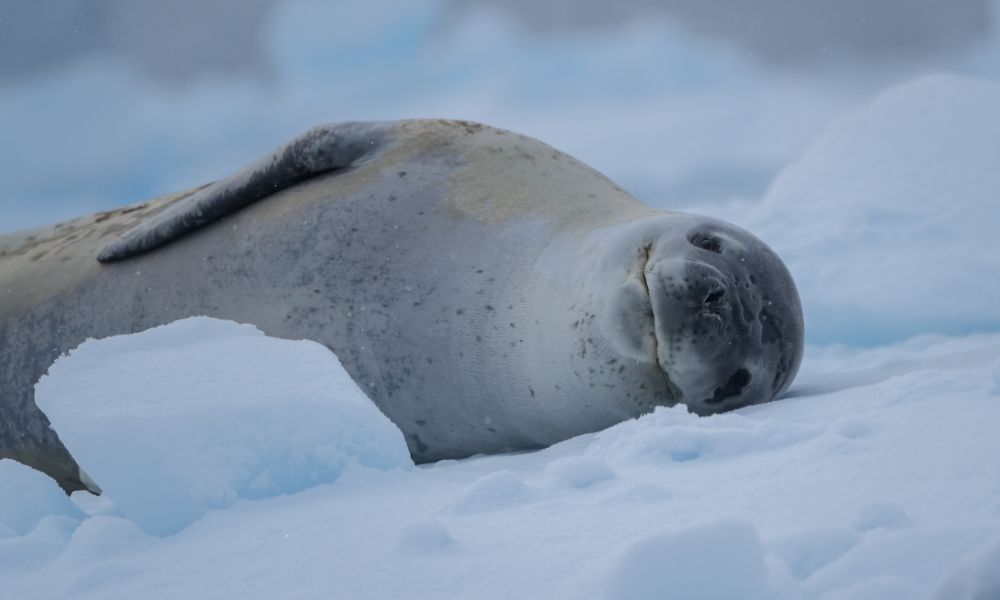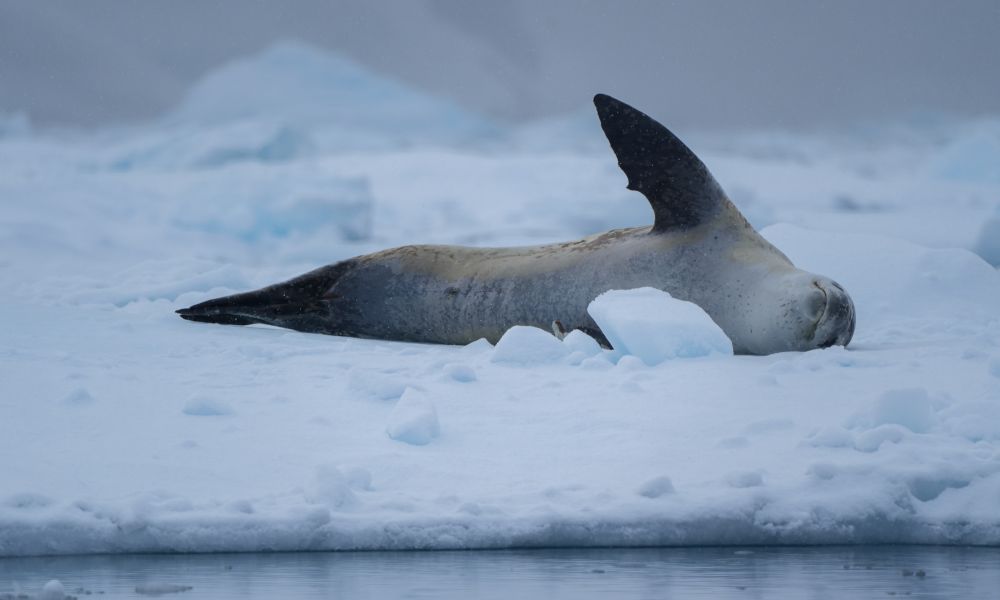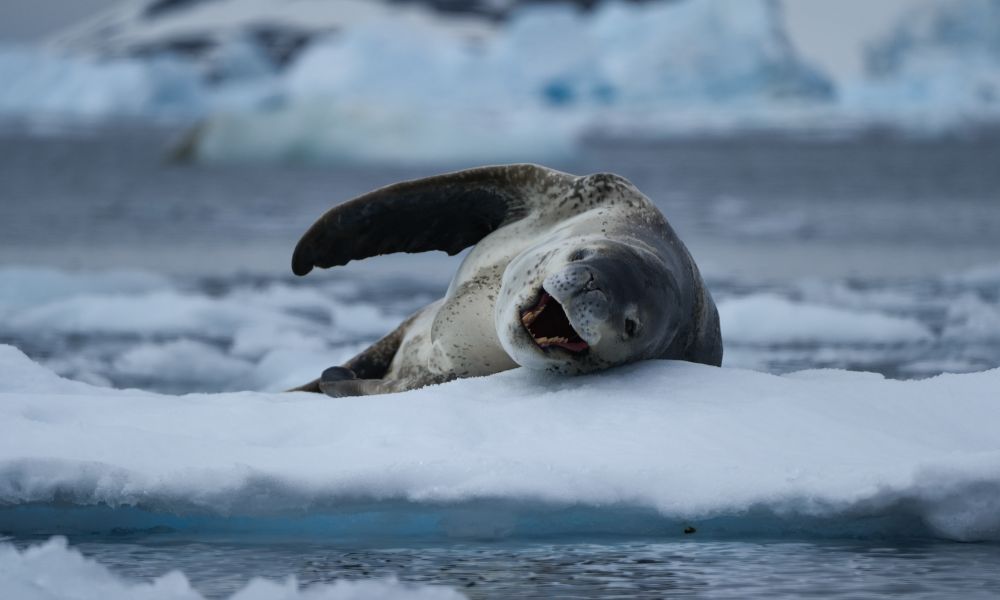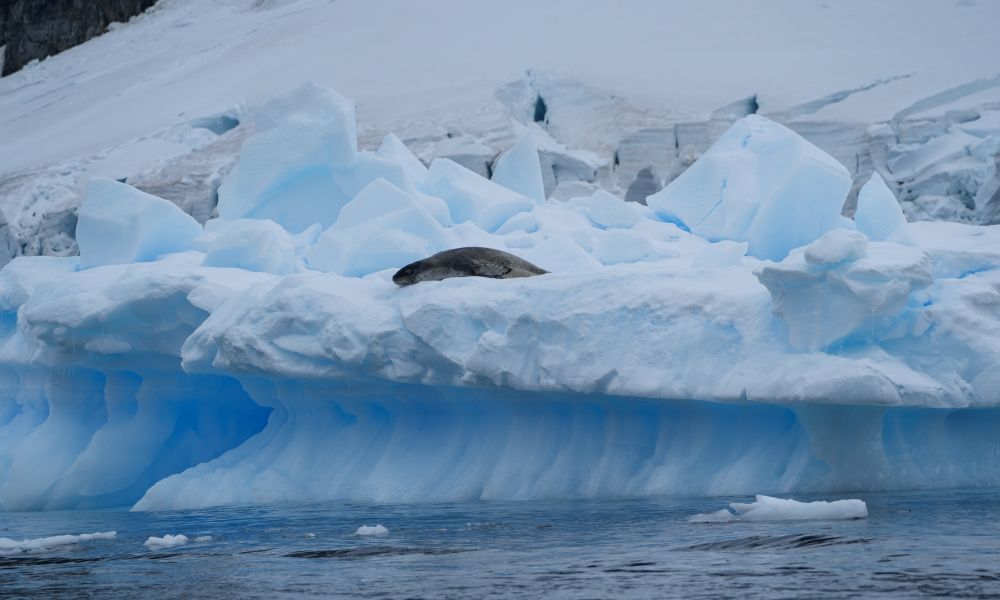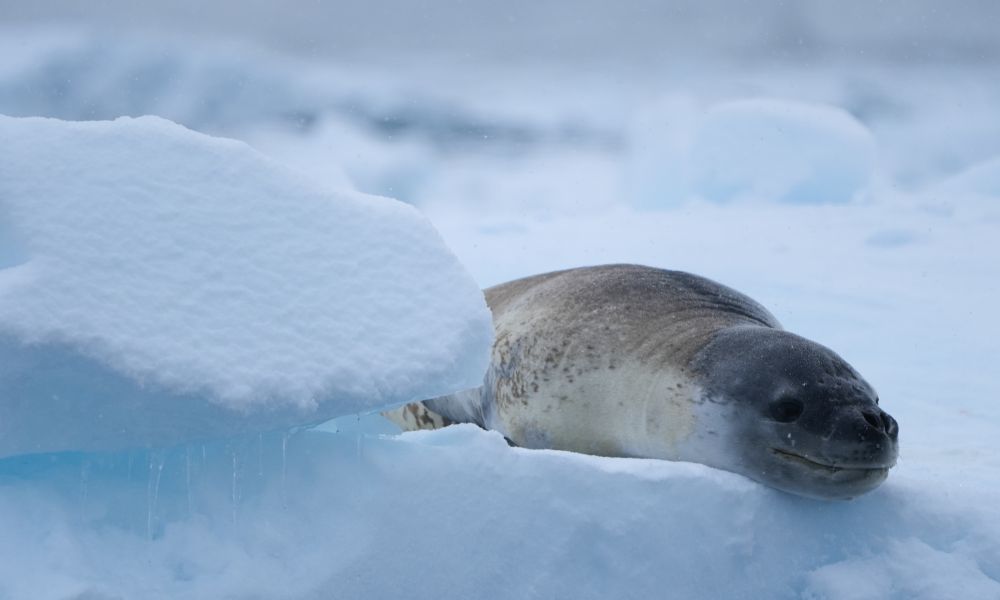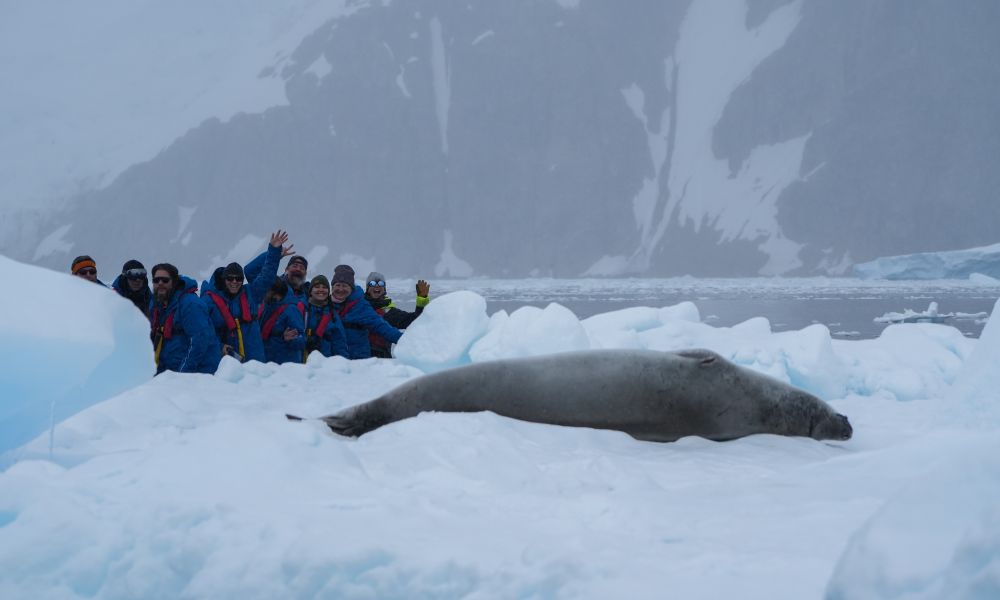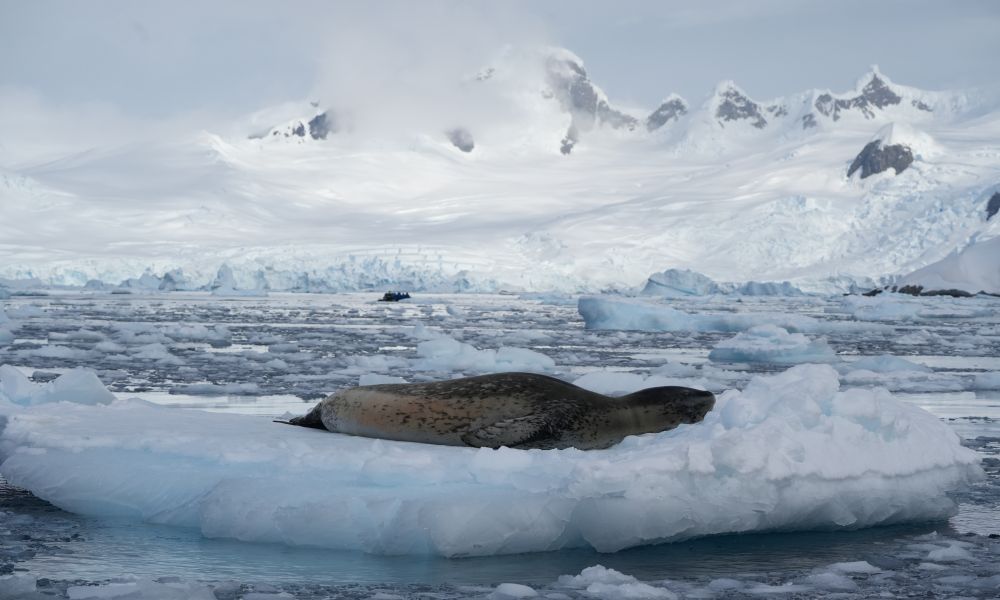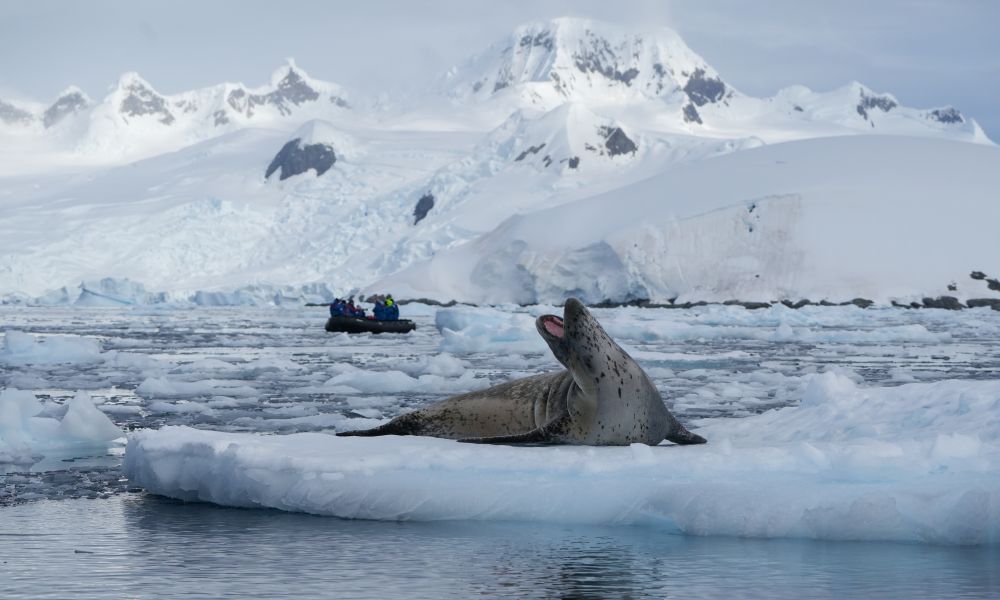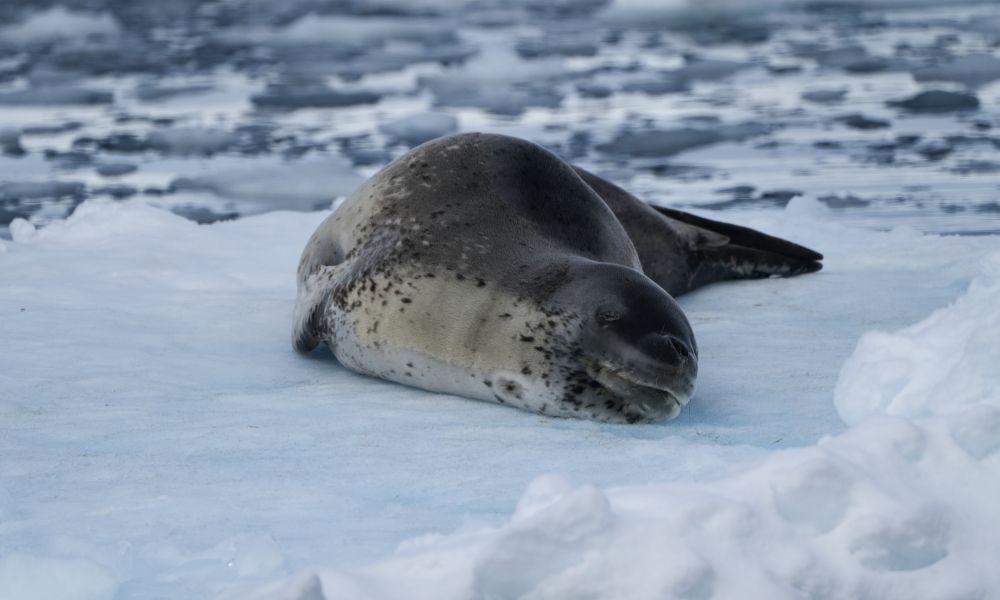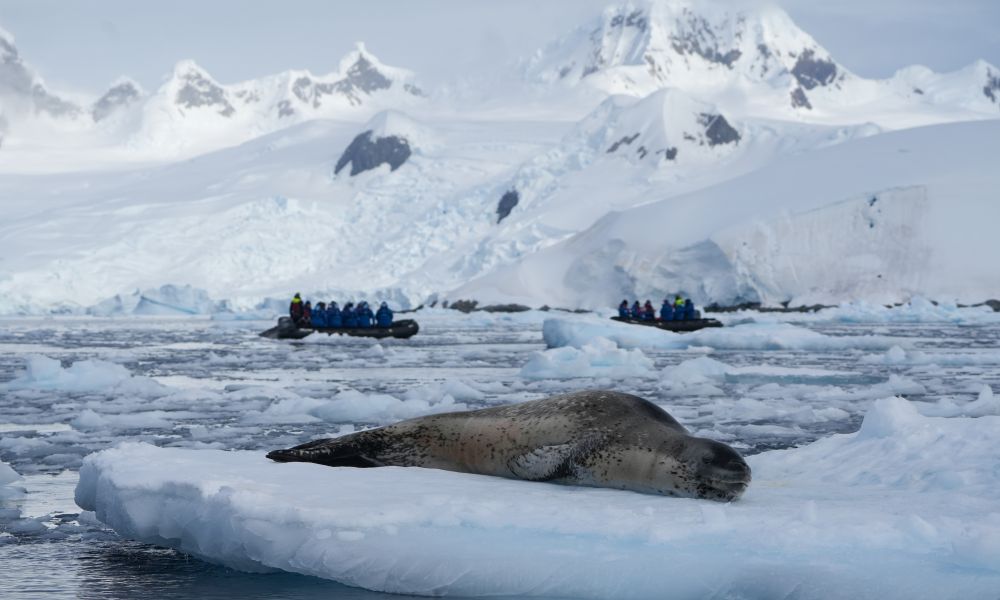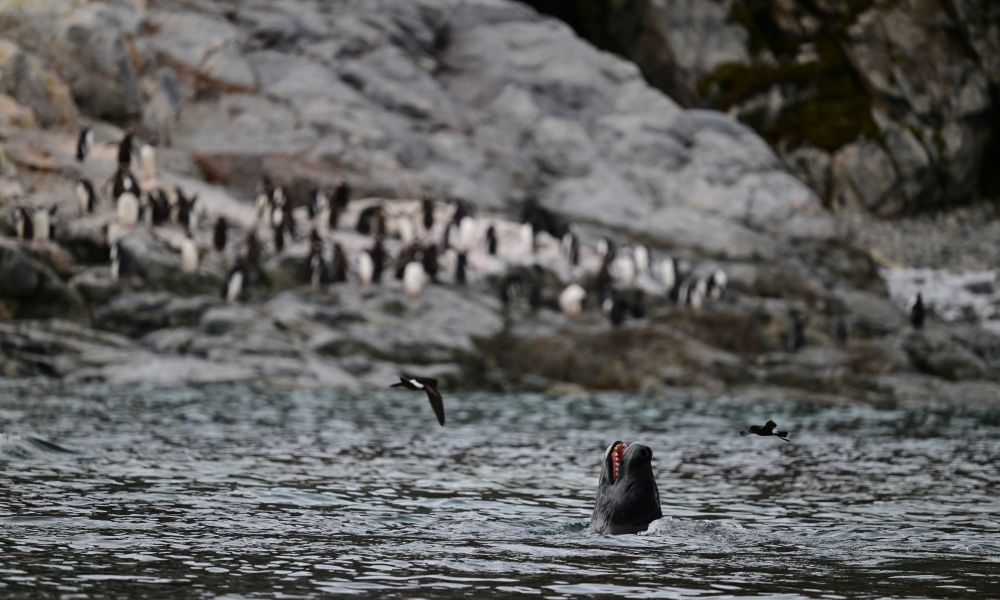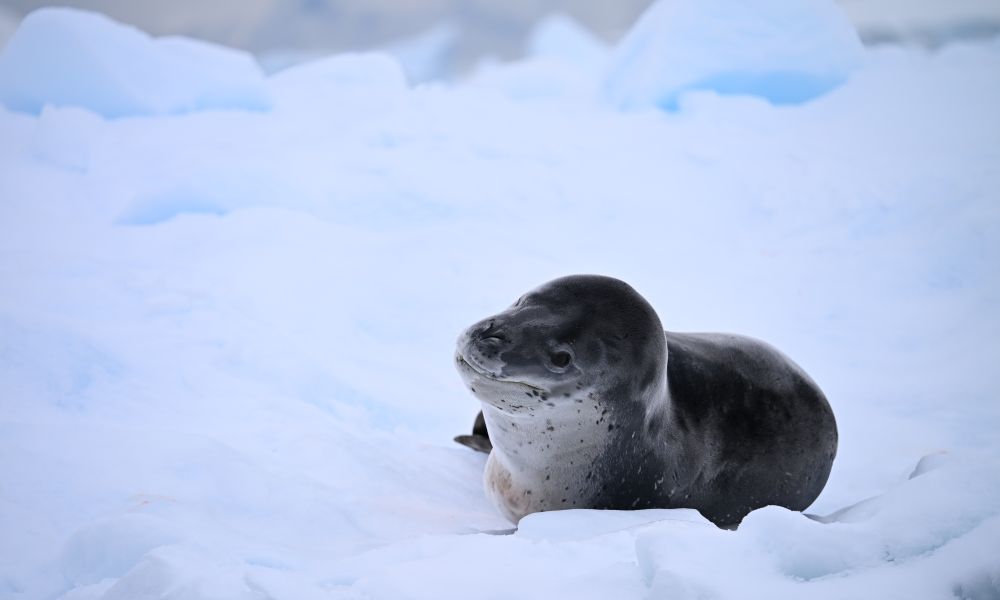How big is a leopard seal?
A leopard seal size is typically of 200 kg to 600 kg in weight and measures between 2.4 m and 3.5 m in length, with females being slightly larger than males. They are regarded as the second-largest type of seal in Antarctica, only surpassed by the massive elephant seal.
What does a leopard seal eat?
The leopard seal diet is very varied. It is a muscular predator with a large mouth, featuring prominent sharp front teeth and molars (about 2.5 cm), occupying the same ecological niche in Antarctica as polar bears do in the Arctic. Baby leopard seals feed mostly on krill, using teeth suitable for this purpose. As it matures, it transitions to a diet that includes penguins, seabirds, and fish. Large leopard seals hunt other seals, including pups of crabeater and fur seals.
Who are their natural predators?
Although it is the top predator in Antarctica with the highest position in the food chain, it should also look after itself. The biggest leopard seals predators are the killer whales, but pups may also be vulnerable to larger seals of the same species!
Can a leopard seal kill a human?
Do you think leopard seals attack humans? That is a controversial question because this top predator is known to be uncommonly curious and almost playful, but at the same time, it can be extremely dangerous to humans. While not common, there have been some reported cases. What usually happens is that they can get quite close and may have bad habits such as biting holes in the pontoons of Zodiacs. Although most encounters assume that those seals are non-aggressive, they should always be approached with caution.
Where does the leopard seal live?
The leopard seal habitat is the pack ice and the edge of the permanent ice, close to penguin colonies in open areas. This species is common throughout Antarctica and is also found on many sub-Antarctic islands, such as South Georgia and the Falkland Islands, as well as occasionally on the southern coasts of southern continents. Its highest concentration is in western Antarctica, south of South America.



